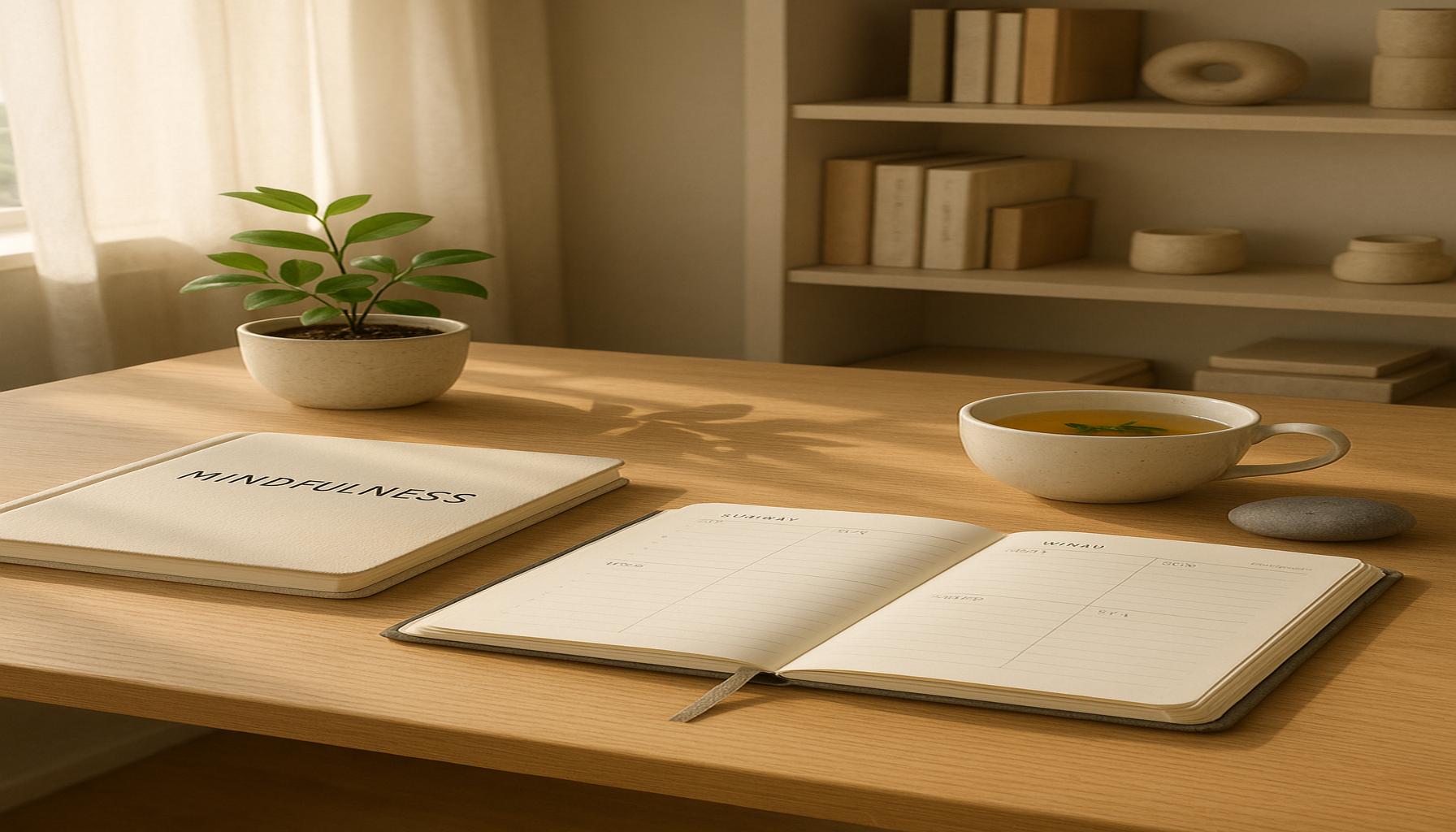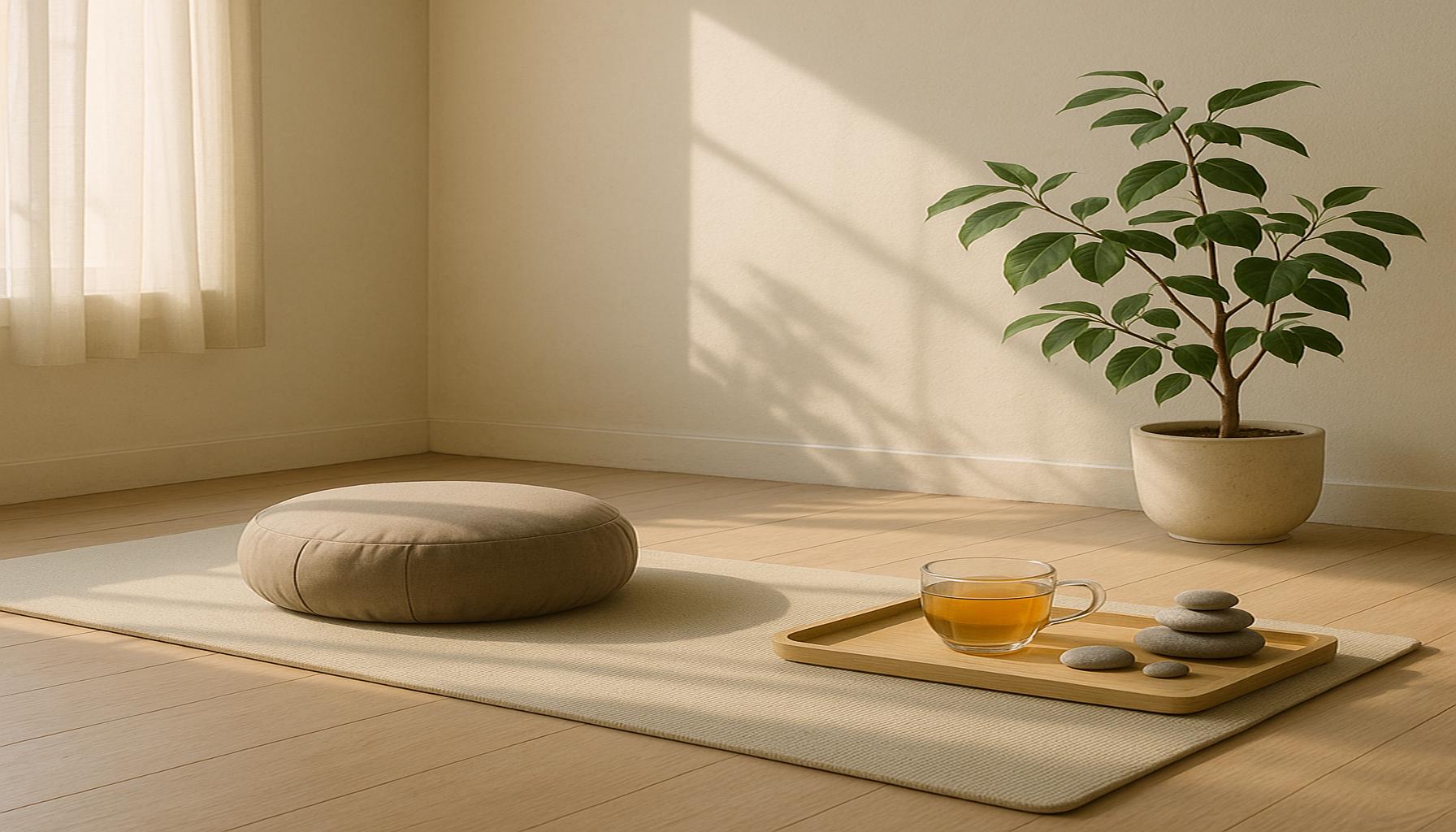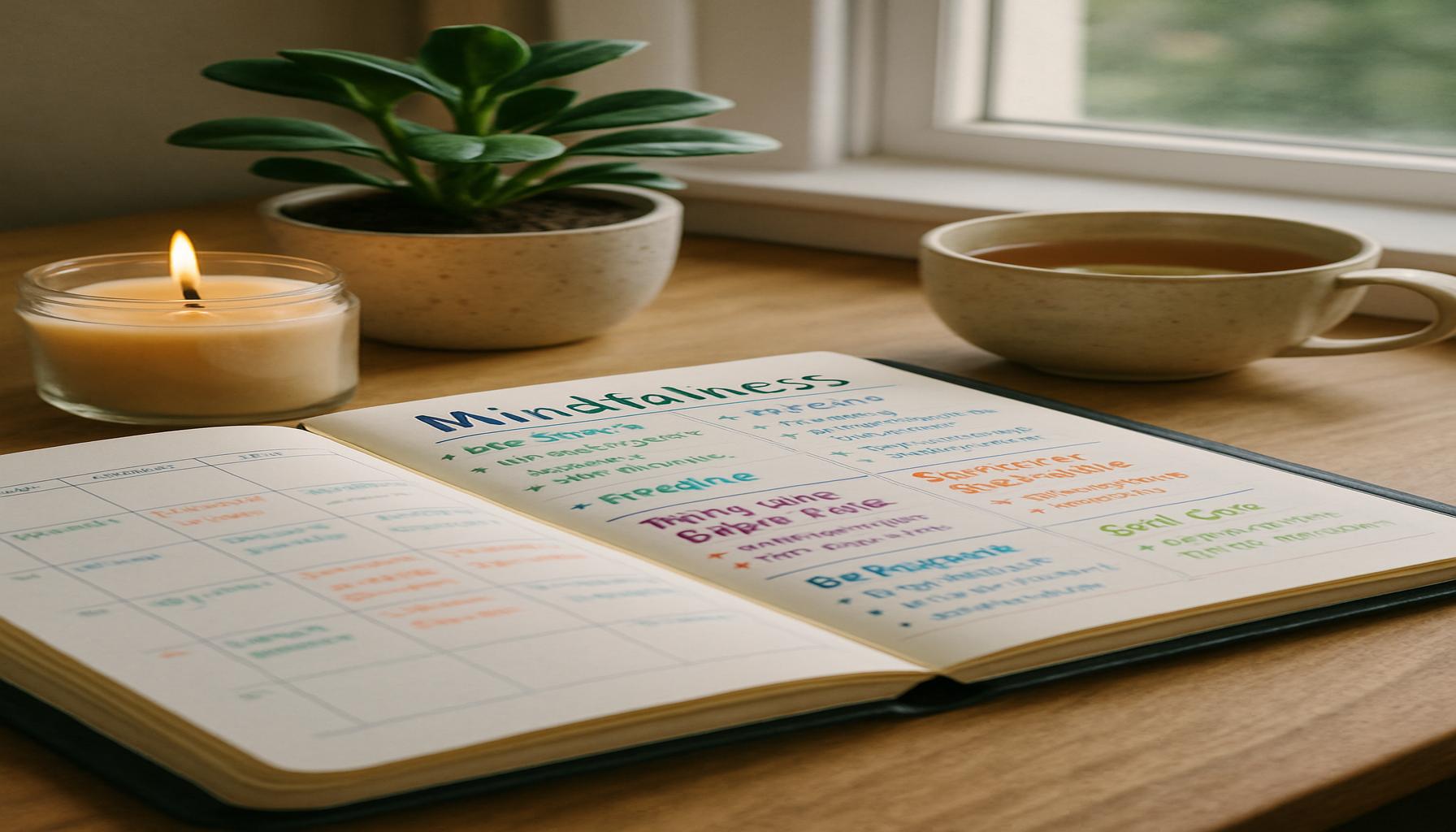Master Mindfulness for Personal Organization Achieve a Structured Life

Finding Balance in a Chaotic World
In today’s fast-paced world, the quest for balance and focus can feel overwhelmingly elusive. As the pace of life quickens, many find themselves searching for methods to regain a sense of control and calm. The intersection of mindfulness and personal organization offers a refreshing and powerful approach to simplifying daily life. By cultivating present-moment awareness, individuals can effectively declutter not only their physical spaces but also enhance mental clarity, leading to a more harmonious existence.
The Benefits of Mindfulness in Organization
Integrating mindfulness into your organizational routines can lead to profound improvements in productivity and overall well-being. Let’s delve into some key benefits:
- Reduced stress through intentional decluttering. By methodically clearing physical clutter, you create a serene environment that reflects and promotes inner calm.
- Improved focus when prioritizing tasks, a result of being fully present and engaged with each activity. This intentionality helps you manage time more effectively and achieve goals systematically.
- Enhanced creativity by clearing mental distractions. A clutter-free mind fosters an open space for creative thoughts and innovative solutions to surface.
Top 5 Strategies for Mindfulness in Organization
This article will explore the Top 5 strategies for mastering mindfulness to achieve a more structured and fulfilling life. Prepare to discover innovative techniques that can transform your approach to daily challenges, making them not only manageable but also opportunities for growth and self-discovery. Enacting these strategies can help you cultivate a purposeful, balanced lifestyle that is both enriching and sustainable.
Top 5: Mindfulness and Personal Organization – Cultivating Present Awareness for a More Organized Life
In a world where the buzz of constant notifications and never-ending to-do lists is a norm, maintaining a state of organization can seem like a daunting task. Yet, there lies a powerful approach that not only enhances personal organization but enriches the quality of life—mindfulness. By incorporating mindfulness into daily practices, individuals can foster present awareness that aids in achieving a more organized life.
5. Prioritizing Tasks with Mindful Awareness
The art of prioritizing tasks is often clouded by the sheer volume of demands placed upon us. Yet, mindfulness introduces a transformative element to this critical skill—intentionality. Instead of being swept away by urgency and external pressures, taking a moment to pause and reflect allows for more effective decision-making. Mindful prioritization is about consciously recognizing what truly matters and aligning tasks with your core values and goals.

To enhance your ability to prioritize, consider utilizing structured methodologies:
- The Eisenhower Matrix: This strategy categorizes tasks based on two criteria: urgency and importance. Tasks that are both urgent and important are prioritized, while those that neither hold immediacy nor significance can be deferred or eliminated entirely.
- The ABCDE Method: Assign a letter to each task, ranging from A for tasks that are crucial, to E for tasks that can be minimized. This system encourages a clear hierarchy of duties, prompting focus on what adds the most value.
- Time Blocking: By allocating dedicated blocks of time for specific tasks, this technique encourages deep focus and minimizes the temptation to multitask. It’s about being fully present during that time, which bolsters productivity and reduces stress.
Through mindful awareness in task prioritization, not only do you learn to discern what deserves attention but also experience a harmonious flow throughout your day.
4. Mindful Decluttering
Beyond physical tidiness, decluttering serves as a metaphor for clarity in life. However, when done mindlessly, it becomes merely a routine chore. Mindful decluttering, conversely, transforms this activity into a thoughtful evaluation of one’s belongings. It involves asking the vital question: Does this item bring joy or serve a purpose in my life? This objective reflection not only guides decluttering but also offers deeper insights into personal needs and values.
To truly practice mindful decluttering, embark on the journey with these steps:
- Set the Intention: Define a clear reason for decluttering, whether it’s to create a more serene environment, reduce stress, or simply appreciate more what you already have.
- Choose One Area: Begin with a small, manageable space such as a drawer or a bookshelf. Success in these smaller tasks can motivate you to tackle larger areas over time.
- Reflect on Each Item: Physically handle each item, consider its necessity or emotional value, and decide whether it merits keeping. This tactile engagement deepens the process and helps reinforce decisions.
The practice of mindful decluttering not only reduces physical clutter but also sparks a newfound admiration for possessions that remain, creating a space filled with intentional choice.
3. Creating Mindful Rituals for Daily Organization
Incorporating mindful rituals into daily-life acts as a fulcrum for achieving personal organization. These rituals are more than routines—they are purposeful practices that ground you amidst chaos. Mindful rituals can serve as transition points throughout your day, infusing calm and clarity that aid in seamless task management.
Consider implementing these mindful rituals to shape your organizational habits:
- Meditation Breaks: Brief, routine meditations can rejuvenate the mind, providing a mental reset to tackle tasks with renewed focus and creativity.
- Morning Affirmations: Starting the day with affirmations sets a positive tone for intentionality and can ensure your goals for the day align with your broader life aspirations.
- Evening Review: Dedicate time to review your day. Evaluate what was accomplished, recognize challenges, and plan adjustments for the following day. This reflective practice enhances continuous improvement and personal growth.
Integrating these mindful rituals into your routine contributes to a tranquil, yet dynamic, environment conducive to staying organized and achieving personal goals.
2. The Role of Mindfulness in Time Management
Time, a constant yet limited resource, demands adept management to extract maximum value. Incorporating mindfulness into your time management practices enhances efficiency by fostering a focus on the present moment. This shift from a frenetic hustle to calm precision transforms time management from a chore into an art form.
To utilize mindfulness in managing time effectively, consider these approaches:
- Focused Work Sessions: Techniques such as the Pomodoro Technique advocate working in short, intense bursts interspersed with breaks. This promotes sustained attention and prevents burnout.
- Awareness of Time Spent: Tracking the duration of tasks helps in understanding productivity patterns and informs future scheduling, ensuring more accurate and realistic planning.
- Limit Multitasking: Engaging fully in one task at a time encourages higher quality outcomes and diminishes errors—a key principle supported by neurological studies showing that the brain is not as adept at multitasking as once believed.
By embracing each moment and recognizing the finite nature of time, mindfulness elevates the art of time management, transforming it from an abstract concept into a tangible measure of personal success and satisfaction.
1. Living Mindfully to Foster a Sense of Purpose
At the heart of mindfulness and personal organization lies the practice of living purposefully through present awareness. This overarching approach amplifies the effectiveness of all organizational strategies, ensuring that every task, ritual, and decision aligns with a deeper sense of purpose.
Starting each day with a clear understanding of your objectives enhances your capacity to prioritize tasks, manage time, and embrace a clutter-free environment aligned with your values. Living mindfully involves integrating practices such as:
- Gratitude Practices: Regularly expressing gratitude shifts focus from scarcity and stress to abundance and contentment, fostering overall well-being.
- Daily Reflection: Engaging in frequent self-reflection can help realign actions with long-term goals, nourishing a life of purpose.
Ultimately, living mindfully engenders a continuous cycle of intention and awareness. Every choice becomes a building block for a life in which personal organization is not just an outcome but a reflection of what truly matters. By cultivating this state of mindful living, the chaos of modern life is met with clarity, transforming everyday tasks into meaningful, fulfilling experiences.
| Category | Key Features | Advantages | Disadvantages | Who Benefits Most |
|---|---|---|---|---|
| Mindful Living | Focus on present experiences; reduce multitasking | Enhanced concentration; improved emotional regulation | Can be difficult to maintain; distractions persist | Individuals seeking mental clarity and peace |
| Time Management | Organizing priorities; setting realistic goals | Increased productivity; reduced stress levels | Requires consistent effort; can feel overwhelming | Busy professionals and students |
| Goal Setting | Defining long-term and short-term objectives | Provides direction; boosts motivation and confidence | Misalignment can lead to frustration; needs reevaluation | Goal-oriented individuals and teams |
| Mindfulness Practices | Includes meditation, breathing exercises, and journaling | Reduces anxiety; enhances overall well-being | Time-consuming; may require guidance | Individuals interested in mental health and mindfulness |
Exploring the **Mindful Living** category reveals the essence of enhancing concentration and emotional regulation, which can often be overlooked in a fast-paced society. Mindful living emphasizes staying present and minimizing the chaos of multitasking. The downside is that maintaining mindfulness can be challenging, especially with frequent distractions in everyday life. However, individuals seeking mental clarity find this approach particularly beneficial.Time Management is another critical aspect that plays beautifully with the overarching theme of mindfulness. By setting realistic goals and organizing priorities, busy professionals and students can significantly increase their productivity while simultaneously mitigating stress levels. Although sustaining this practice can feel overwhelming at times, the rewards of reduced anxiety and a clearer path to achieving objectives are often worth the effort.Goal setting provides a framework for defining both long-term and short-term objectives. This structured approach not only provides direction but also fuels motivation and builds confidence. Nevertheless, misalignment of goals can lead to frustration, necessitating periodic reevaluation for continued success. Hence, goal-oriented individuals and teams find this method particularly effective as they navigate through their respective pursuits.Lastly, various **mindfulness practices**, encompassing meditation, breathing exercises, and journaling, offer a holistic path towards improved mental health. These practices excel in reducing anxiety and fostering an enhanced sense of well-being. While they tend to be time-consuming and often require initial guidance, the personal transformation they cultivate makes them an invaluable tool for anyone interested in embracing mindfulness. With a commitment to regular practice, individuals can reap substantial benefits that expand beyond just personal organization into the wider realms of emotional and mental health.
Frequently Asked Questions: Mindfulness and Personal Organization
How does mindfulness contribute to better personal organization?
Mindfulness allows individuals to cultivate a heightened state of awareness and focus, crucial elements for effective organization. By practicing mindfulness, you develop the ability to stay present and attentive, thereby reducing distractions. This can lead to more precise prioritization and execution of tasks, ultimately resulting in a more structured and orderly life.
Can mindfulness help reduce stress associated with managing daily tasks?
Yes, mindfulness practices, such as meditation, have been shown to decrease stress levels by promoting a sense of calm and stability in the mind. When you approach daily tasks with a mindful attitude, you may find that stress diminishes, as mindfulness encourages a non-judgmental acknowledgment of stressful thoughts, allowing you to tackle tasks with a clearer mindset.
Are there specific mindfulness exercises aimed at improving organizational skills?
Various mindfulness techniques can enhance organizational abilities. For instance, the practice of mindful journaling helps in clarifying thoughts and setting priorities, while focused breathing exercises can improve concentration. Additionally, techniques like the Body Scan sharpen awareness about personal states, assisting in organizing tasks based on energy levels and mental clarity.
How much time should I dedicate daily to mindfulness to see improvements in organization?
The benefits of mindfulness can be experienced with as little as 5 to 10 minutes per day. Consistency is key, so integrating small doses of mindfulness into your daily routine can progressively lead to significant improvements in personal organization. As with any skill, the more often you practice, the more adept you become.
Is mindfulness a standalone solution for personal organization or should it be combined with other strategies?
While mindfulness is a powerful tool for boosting organizational skills, it often yields the best results when combined with other strategies, such as using planners, setting clear goals, and scheduling regular breaks. By complementing mindfulness with these tactics, you can create a holistic approach that ensures organization is both effective and sustainable.
Conclusion: Mindfulness and Personal Organization
Incorporating mindfulness into personal organization can be transformative, offering a path to a more structured and intentional life. This practice encourages individuals to pay attention to the present moment, paving the way for enhanced focus, reduced stress, and increased productivity. By integrating mindfulness techniques, such as meditation and deep breathing, one can develop a clearer understanding of priorities, making it easier to declutter both mental and physical spaces.
As explored throughout this article, the fusion of mindfulness and personal organization not only enhances efficiency but also fosters a sense of balance and well-being. Living mindfully encourages us to be more deliberate in our actions, whether it be scheduling commitments, managing time, or handling tasks with greater ease. This intentional living resonates with the minimalist philosophy, emphasizing the value of quality over quantity, and enabling us to focus our energies on what truly matters.
Moreover, embracing a mindful approach can prompt individuals to examine their habits and create a more sustainable lifestyle. By acknowledging the correlation between mindfulness and organization, we open doors to a world of possibilities that include heightened awareness, better decision-making, and ultimately, a more peaceful existence.
In conclusion, the synergy between mindfulness and personal organization serves as a powerful ally for anyone seeking to refine their life with purpose and clarity. As we continue to explore this dynamic, let us remain curious and open to discovering new ways to cultivate mindfulness for a harmonious and organized life.


